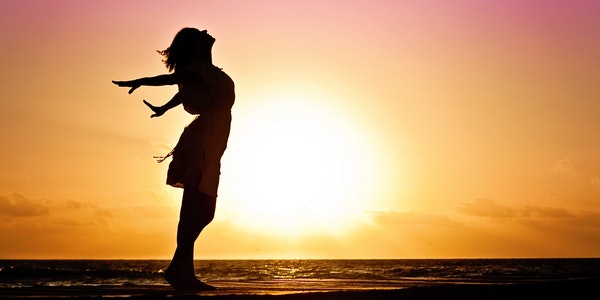Close-ups are the most direct and easiest way of expression in portrait photography. It can express the beautiful faces of the characters in a straightforward way. Close-up photos are simple, clear, intuitive, easy to learn and master.
Table of Contents
Straightforward Performance is the Preferred Method for Close-ups
The most intuitive way to shoot portrait close-ups is to fill the picture with the person’s face and the camera close to the model. A part of the area can be reserved for composition space in the picture, but don’t charge too much body torso below the neck of the character. Grab the most exciting look of the model and press the shutter.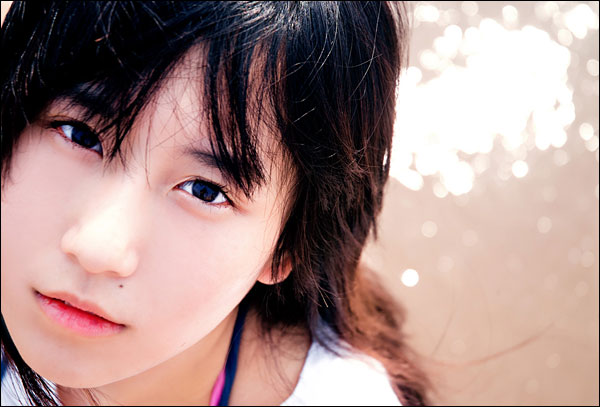
Although close-up shooting may seem simple, there are many details that need to be controlled.
First of all, close-ups are very demanding on models, and facial features and facial features must be correct. Secondly, since the close-up photo skin occupies most of the picture, the pre-makeup is very important. In addition, close-ups test the expressiveness of the model, and the model must be generous and confident. Finally, you need to pay attention to controlling character deformation. Because close-up photos are taken at a short distance, it is easy to cause deformation of the face and facial features. When shooting, control the angle and use the wide-angle lens with caution.
Shaping the Shooting Effect of Melon-seed Face
One of the keys to the success of close-up photo shooting is the control of the face shape. How to make the model’s face look thinner and more like a “melon face”? The answer is simple. In addition to the conditions of the model, the photographer can use the subtle changes in the shooting angle to control the final effect of the photo.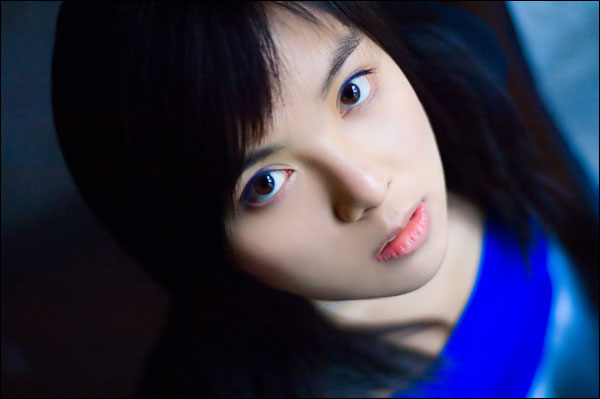
Use Shooting Angles to Create Changes
For photographers, there are not many auxiliary elements that can be selected in the composition of the picture for close-up shooting. At this time, you should grasp the precise shooting angle and create personalized close-up photos through the selection of the shooting angle.
If you can focus on the characteristics of the model, grasp the model’s most beautiful shooting angle, change the angle and try more when taking pictures, you can definitely make the photos look brilliant.
In this example, the photographer changed his position to observe carefully, and finally chose a shooting angle diagonally above. Through the occlusion of the hair, the blurred eyes of the model are expressed in close-up, creating a special picture meaning.
Using the principle of near-large-distance perspective distortion, the photographer shoots from a high angle, or shoots at a straight angle, with the model bowing his head slightly and retracting his chin. At this time, the contours of the model’s face in the picture will appear thinner. In addition, long-haired models can also use hair to cover them appropriately to modify the shape of their faces.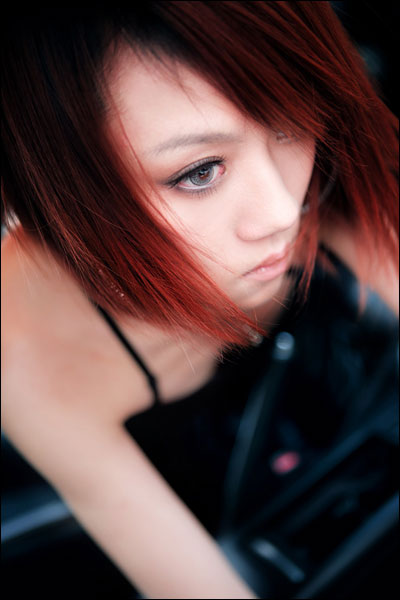
Light Can Create Atmosphere
Although close-up photos do not have a lot of white space on the screen, the effect of light on the screen is still very important. It can change the tone and atmosphere of the picture.
In the close-up creation, you can also use the backlighting method often used in portrait photography to create a high-key picture effect and a warm white tone full of sunlight through light. In the same way, the photographer can also use the side light technique to shape the contours and deep expressions of the characters’ faces.
In this example, the photographer used the technique of backlighting to create a special atmosphere of the picture, making the whole photo look dazzling and refined.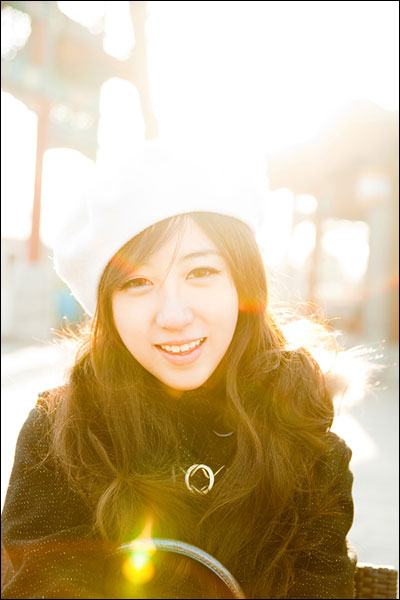
Use Flowers and Plants to Set off the Characters
The photographer can place the model in the flowers, vegetation, and use the flowers as the foreground of the picture or the accessories of the model to decorate the picture. The vitality of plants and the colors of flowers and plants can reflect the youth and beauty of the model.
In the composition of the picture, the photographer needs to control the color of the flowers and plants to see if it matches the model’s clothing. At the same time, it is necessary to control the expression of the model, so that the model and the flowers and plants have a natural interaction.
A common shooting example is that the model is placed in the world of flowers and plants, creating a scene of intoxicating smell. Photographers can also take pictures of holding flowers, slender lady styles, or scenes where models dodge among the flowers to show the lively personality of the models. In short, the model and the flowers and plants in the picture should be natural and harmonious.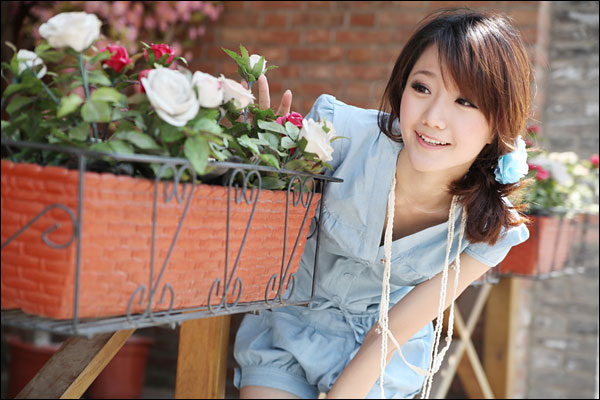
There are not many picture elements that can be used in close-up photos, but flowers and plants are still good shooting props.
Arm Posture in Close-up
In close-up portraits, the model’s arm is an element that can be used. The girl’s hands are slender and beautiful. Through gestures such as touching the hair, lifting the cheeks, pursing the mouth and smiling, the model can add more expressions and expressions to the plain close-up photos, and make the photos more vital and emotional.
The grasp of the arm posture is a difficult point in portrait photography. The movements of the model must be elegant, and the interception of the arms must be natural and appropriate when composing the picture. Otherwise, the presence of arms will destroy the overall effect of the picture.
The performance of the arms in the picture also depends on the model’s natural state, and no traces of posing can be left. Smart arm movements can bring a lively and natural effect to the photos.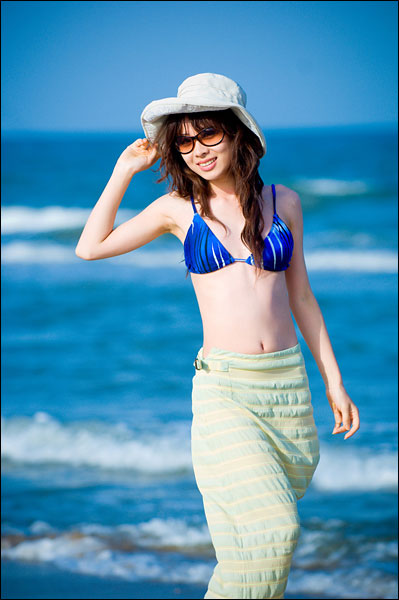
Try Horizontal Composition for Close-ups
Close-up photos are rarely taken in horizontal format. But if you choose a banner composition in a specific scene or to match the pose of the model, you can often get unexpected and ideal effects.
When the model is lying, lying, sitting, etc., it is easier to use the banner composition to express the model’s posture and the dynamics of the picture. Using the model’s unconventional actions can bring a distinctive impact to the photos.
The photo in this example was taken on the beach, and the model was lying on the beach. In order to obtain the desired effect, the photographer lay down on the ground to shoot with a very low angle of view. This kind of perspective brings a refined performance effect to the picture, the picture is full of new ideas, and the model’s charming temperament is fully expressed.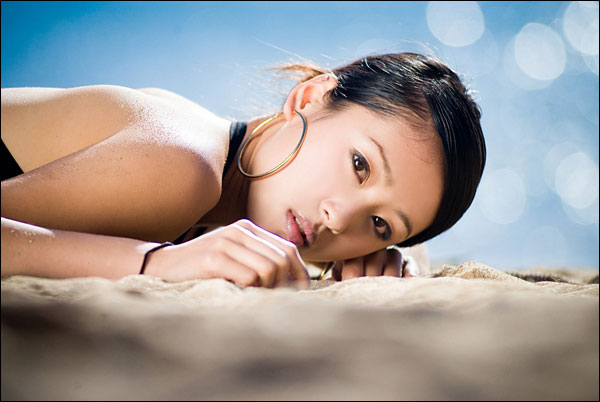
Use Light to Create a Three-dimensional Sense of the Character’s Face
Most close-up portrait photos are taken in a straight light manner, and the performance is straightforward and lacks change. The model’s facial features are not strong. This is one of the reasons why most close-up photos are clichéd.
Photographers can skillfully use light when creating close-ups. In this example, the photographer uses the side light to photograph the model. Through the fine control of the model’s face angle, the light changes on the model’s face and hair can be grasped. For the face on the side of the shadow, use the reflector to carry out the corresponding fill-in light treatment. Through precise exposure, not only the picture has a sharp contrast between light and dark, but also the three-dimensional sense of the model’s five senses is well expressed.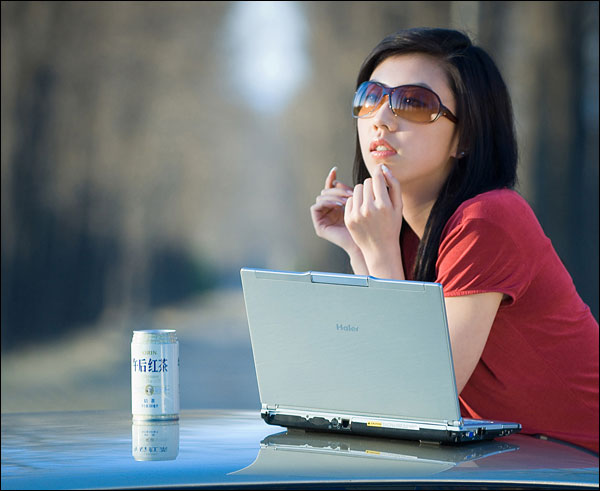
Side light is not used much in portrait photography. But if used properly, it can not only create more light and shade changes for the photos, but also make the model appear more vivid and attractive in the picture.
